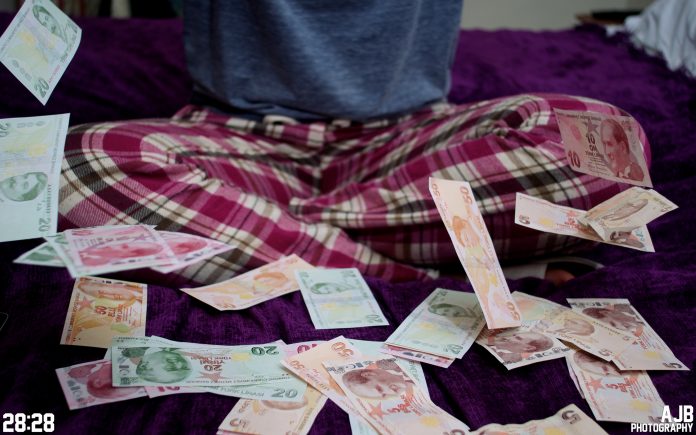Ending one of its most turbulent weeks in its history, the Turkish Lira last week settled at six to the dollar. Turkey’s borrowing spree and President Recep Tayyip Erdogan’s insistence on low interest rates hastened the lira’s fall.
However, more trouble could be around the corner, according to Maximilian Hess, a London-based political risk analyst and writer.
In an article for Eurasianet online, Hess explained how Turkey’s trade with Kyrgyzstan and Kazakhstan has been growing steadily, despite some hiccups caused by the creation of external tariff barriers under the Moscow-led Eurasian Economic Union. Also, Ankara’s business ties with Tajikistan, which does not share a Turkic language like the other Central Asian states, have steadily grown.
However, Uzbekistan has offered the most promise as a result of the gradual opening-up by President Shavkat Mirziyoyev, who has worked hard to mend strained ties with Turkey as part of his global charm offensive.
The textile industry is seen as one of the strongest potential areas for growth in Turkish-Central Asian trade and it is a useful bellwether for understanding what impact the currency crisis will leave, according to Hess.
Meanwhile, neighbouring Kyrgyzstan has put up a reasonably strong defence of its currency, which is also affecting the textile sector. Small-scale clothes-making studios are a precious and rare job-generator.
Speaking to Eurasianet, Aziz Soltobayev, chief executive of Kyrgyzstan’s leading e-commerce platform Svetofor.info, said: “The Kyrgyz som has so far maintained its position, which means that Turkish goods, in particular clothing, have become cheaper for Kyrgyz people. But this will have the opposite effect for Kyrgyzstan’s light industry. Cheaper imported clothing from Turkey could significantly reduce the competitiveness of Kyrgyz textiles in the local market.”
Elsewhere, the lira’s fall is already pushing down the Georgian lari and the Azeri manat.
Georgia-based investment bank Galt & Taggart lowered its forecast for the Georgian lari in light of Turkey’s turbulence, although it is also insisted contagion should be contained. According to Hess, given Georgia’s reliance on imports for secondary goods, the lira’s weakening will have some benefits. At the same time, any upside will be mitigated by the fact that Turkish firms are among the largest foreign investors in Georgia.
Azerbaijani economist Gubad Ibadoglu told Eurasianet that the lira’s depreciation would not only impact the competitiveness of Azerbaijan’s non-oil sectors but would also hit the all-important Socar state oil and gas company. According to Ibadoglu, Socar’s investments in Turkey have totalled $19bn – but as they are denominated in lira, they are set to depreciate in line with the lira against the dollar. And Baku’s sovereign wealth fund, the State Oil Fund of the Republic of Azerbaijan, or SOFAZ, has around 0.9% of its holdings in Turkish government bonds, which have fallen precipitously this year.
Hess also stressed that Azerbaijan has more exposure to the Turkish banking sector than other Caucasian and Central Asian states. The lira crisis is likely to have a particularly strong impact on Turkey’s banks, given their propensity for taking loans in dollars and euros.
What is more, there is one country that is in a rather unique position: Turkmenistan. As the sole remaining Eurasian state that refuses to lift its dollar peg, its official 3.51 Turkmen manat to-the-dollar rate is far below black-market price for the currency and further maintaining the peg will all but eradicate any regional competitiveness.
Turkmenistan may be particularly affected, however, by the lira’s weakness given there is every reason to believe Turkey has become a reliable source of remittances, notes Hess.
Meanwhile, it is Armenia that is the most insulated from trade and remittance impacts related to the lira’s fall. The lack of formal relations between Ankara and Yerevan has long hindered cross-border investment. Less than 0.1% of remittances come from Turkey, writes Hess.
Overall, the story of the lira is as much about politics as economics. Almaty-based economist Denis Krivosheyev told Eurasianet: “The situation with the lira in Turkey cannot be viewed in isolation from the political context in the country, region and world as a whole. Investors are withdrawing money from the country believing, not without reason, that a dictatorship is coming, in which a free market is impossible.”

